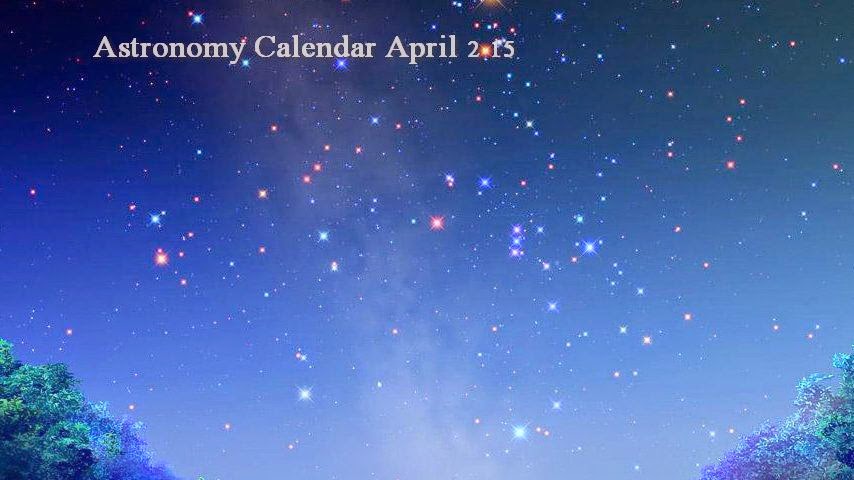| Online: | |
| Visits: | |
| Stories: |

| Story Views | |
| Now: | |
| Last Hour: | |
| Last 24 Hours: | |
| Total: | |
Astronomical phenomena April 2015.
http://lupuvictor.blogspot.com
Calendar with astronomical events for you to observe.
Opportunities for observation for March 2015:
Here’s how it looks:
►April 1, 2015 - Moon at apogee. Luna reach the farthest point from Earth (406012 km from Earth), at 12:59 GMT
►April 01, 2015 - Comet C / 2012 F3 (PANSTARRS) reaches perihelion, the closest position of the sun. It was discovered on 30 November 2008. No data yet about its orbit or diameter.
►April 04, 2015 - Full Moon. The earth will be between the Sun and the Moon, and therefore, the Moon will be fully illuminated as seen from Earth. This phase occurs at 12:05 GMT
►April 04 2015 - partial eclipse of the Moon mag = 0.996, at 12:01 GMT. Earth will be between the Moon and the Sun and Earth’s shadow will cover the lunar disc. The eclipse will be visible in most of North America, Pacific, East Asia and New Zealand.
►April 06, 2015 - The conjunction of Uranus and the Sun. 14:00 GMT.
►April 06 2015 - Comet 88P / Howell reaches perihelion, the closest position of the sun. It was discovered on August 29, 1981. Its diameter is 4.4 km. It has an orbit of 5.5 years.
►April 08, 2015 - Comet 42P / Neujmin 3 reaches perihelion, the closest position of the sun. It was discovered on August 2, 1929. Its diameter is 2.2 km. It has an orbit of 10.71 years.
►April 10, 2015 - Mercury at superior conjunction. Mercury passes on the opposite side of the Sun from the Earth at 04:00 GMT.
►April 12, 2015 - Moon at the last quarter. at 03:44 GMT.
►April 17, 2015 - The Moon reaches perigee, the closest point to Earth (361026 km from Earth) at 3:53 GMT
►April 18, 2015 - New Moon. Moon will be directly between the Earth and the Sun and will not be visible from Earth. This phase occurs at 18:57 GMT.
►April 18, 2015 - Venus at perihelion. Venus reaches the closest point to the Sun, at 13:00GMT.
►April 18, 2015 - Comet P / 2006 S6 (Hill) reaches perihelion, the closest position of the sun. It was discovered on August 29, 2006. No data yet about its orbit or diameter.
►April 19, 2015 - Mercury perihelion. Mercury reaches the closest point to the Sun, at 20:00 GMT.
►April 22-23, 2015 - Lyrid meteor shower. Lyrids are meteor showers with medium intensity, usually producing about 20 meteors per hour. These meteors can produce bright dusttail that takes a few seconds. Some meteors may be visible between April 16 to 25. First quarter moon will set shortly after midnight, leaving a fairly dark sky, so it could be a good show. These meteors radiate from the constellation Lyra, and their source Comet Thatcher18611.
►April 25, 2015 - Moon at the first quarter. at 23:55 GMT.
►April 29, 2015 - Moon at apogee. Luna reach the farthest point from Earth (40508 km from the Earth) at 3:55 GMT
Previous calendar: Astronomical phenomena March 2015
http://lupuvictor.blogspot.com/2015/03/astronomical-phenomena-april-2015.html




